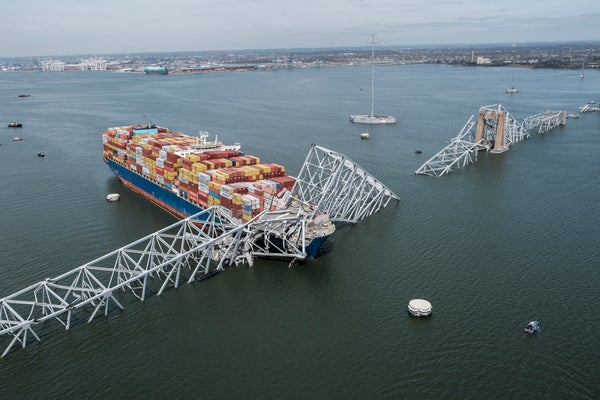Baltimore Bridge Collapse Will Teach Engineers to Build Safer Infrastructure
The loss of Baltimore’s Francis Scott Key Bridge after a cargo ship collision will teach engineers how to design structures better able to withstand disasters
In this aerial image, the steel frame of the Francis Scott Key Bridge sits on top of a container ship after the bridge collapsed in Baltimore on March 26, 2024.
Michael A. McCoy for The Washington Post via Getty Images
The following essay is reprinted with permission from ![]() The Conversation, an online publication covering the latest research.
The Conversation, an online publication covering the latest research.
The cargo ship collision that destroyed the Francis Scott Key Bridge in Baltimore on March 26, 2024, is raising questions about just how much engineers can do to prevent such catastrophes from occurring in the future. Here, Michael J. Chajes, a professor of civil and environmental engineering at the University of Delaware, discusses how bridge design codes have changed over the years and the challenges of building new structures, and retrofitting existing ones, so they can survive extreme events
How hard is it to design a bridge to withstand the force that took down the Francis Scott Key Bridge?
On supporting science journalism
If you’re enjoying this article, consider supporting our award-winning journalism by subscribing. By purchasing a subscription you are helping to ensure the future of impactful stories about the discoveries and ideas shaping our world today.
Once engineers understand the forces that a structure will be subjected to, they can design a structure to withstand them. That said, we know that each force has a range of magnitudes that can occur. For example, not all trucks on the roadways weigh the same amount, not all earthquakes are of the same magnitude, and not all ships have the same weight. We incorporate this variability in forces into the design.
Even if built to a given set of plans, the final strength of the structure can…
Read the full article here







